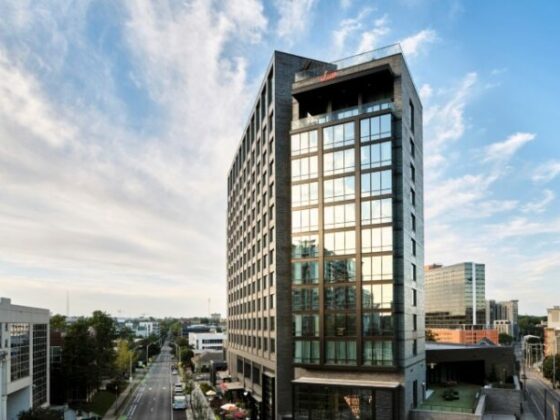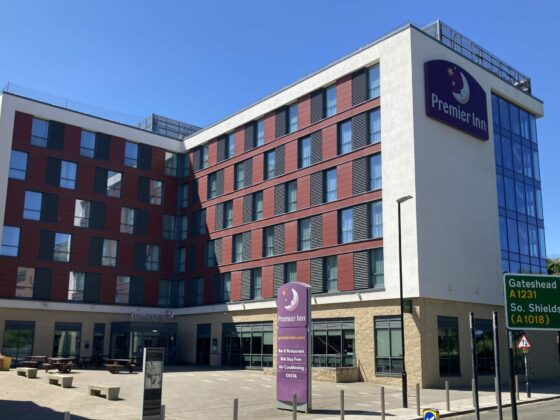
UK hotel investment reached an estimated £1.04bn in Q3 2025, marking a 28% increase year-on-year, according to Savills. The growth has been fuelled by single-asset deals, which accounted for 92% of transactions, and strong regional activity. London dominated with £697m of transactions, while Scotland, the South West, and the West Midlands recorded triple-digit growth compared with 2024. Analysts agree that renewed overseas capital and domestic owner-operator activity are supporting a market still below long-term trends.
Daniel Kyriakides, partner at Reed Smith, points to consumer demand and lifestyle-led brands as key drivers of this growth.
“Since the pandemic, both leisure and business travel have rebounded sharply, and that has translated into very strong hotel performance. Another important factor is the shift in investor focus toward lifestyle-led businesses,” he explains. “The rise of private members’ clubs in London has also fuelled this, as many now offer hotel accommodation as part of membership or partner with established luxury brands.”
CoStar data confirms strong single-asset activity and regional diversification, echoing Savills’ findings. Cristina Balekjian, UK director of hospitality analytics at CoStar, concedes that 2025 was off to a slower start through the first half.
“We’ve seen activity pick up in Q3, especially in September. Transaction volumes rose, and more assets were traded,” Balekjian says. “Owner-operators have been especially active, acquiring individual hotels or small groups of properties as part of expansion strategies.”
Analysts also note that boutique, lifestyle and heritage assets are particularly appealing to investors seeking above-average returns. Kyriakides adds: “Boutique hotels offer an attractive balance – smaller scale means more modest capex requirements, yet they can still deliver strong returns. Investors see these as ways to differentiate and add value while managing costs more effectively than through large-scale development.”
As for who is engaging in these deals, domestic operators remain the most active buyers. They account for 45% of total volumes. However, David Hart, chief executive of RBH Hospitality Management, notes a structural shift.
“We are seeing more acquisition activity from domestic owner operators. For private equity investors, there is limited interest in regional assets without significant investment upside, so owner-operators are increasingly stepping in,” he says.
Village Hotel Club provides a case study in how domestic operators are capitalising on the market. Chief executive Gary Davis also highlights Village Hotels’ dual approach of refurbishment and expansion.
“We have made great progress recently, and have been able to invest significantly to enhance our existing estate and guest experience,” he explains. “We’re looking at ways to both enhance our existing estate whilst also growing through new site acquisitions – both are important.”
That said, international asset managers are also starting to return, targeting value-add opportunities. CoStar’s Balekjian says that external players in the hotel space see the UK as a stable economy with relatively easy access to financing. “There’s also scope to add value over time, especially in markets like London,” she adds. “That long-term value potential is another big draw for foreign investors.”
Meanwhile, Nadia Milligan, commercial property partner at Keystone Law, notes a surge in so-called ‘trophy assets’ for high-net-worth individuals and family offices.
“The luxury market in Central London has become a very hot destination for ‘trophy assets’. We are in the middle of a small ‘window’ where the first generation of family-owned hotel portfolios do not wish to carry on the family business. Consequently, these portfolios are being sold, either as portfolios and individual assets,” she explains. “Many of these assets need significant capex, rebranding and repositioning. There is often a divergence in expected sale price, with some families reluctant to sell for market value.”
This combination of domestic expansion and international interest underlines a market driven by both operational opportunity and portfolio repositioning.
As Balekjian touched on earlier, the cost and availability of debt are shaping investment strategies. Kyriakides explains further that, “Debt remains more expensive than in previous years, and funders are taking a more conservative stance. These conditions mean lenders are seeking stronger borrowers with institutional backing or private-equity support, as well as established hotel brands with clear market positioning.”
]Milligan adds that liquidity has improved and ESG is now central to investment. “On the debt side there has been significant improved liquidity in the debt markets and increased lending appetite. ESG must be baked into feasibility and this is being demanded from all stakeholders,” she says. “Any hotels which have not yet embarked on their ESG journey will soon find it increasingly difficult (if not impossible) to obtain debt or other investment.”
She also confirms the trend toward refurbishment over new development. “New development has almost ground to a halt. The main financial reason is that the costs of construction are higher in the UK than they have ever been, whether it’s the cost of materials, labour, and compliance with regulations.”
Together’s commercial lending data underlines market confidence. The mortgage lender’s chief commercial officer, Ryan Etchells, notes, “There is a sense that the commercial property sector has turned a corner. Property professionals continue to seek out flexible financial support to help them seize opportunities to grow and diversify their commercial portfolios, ensuring they can leverage all available opportunities.”
Kyriakides observes a rise in alternative financing structures. “A big rise in sale-and-leaseback and ground-rent transactions shows this shift. Such deals let owner-operators sell their real estate to a fund and lease it back. This is particularly attractive given hotels’ high operating costs and the relatively limited leverage currently available from banks.”
Regions outside London have experienced strong growth. Scotland recorded £316m of activity year-to-date, up 85% on 2024; the South West rose 360%; and the West Midlands jumped 310%.
RBH’s Hart notes that, “Investors may look more at opportunities to acquire independent properties with the aim of adding value by branding it to increase occupancies and ADRs by tapping into brand distribution.
“There is increasing desire for new hotels (or those attracting investment) to be ‘boutique’ or ‘lifestyle’ which often lends itself to investors looking at independent hotels with a unique building or styling that they can leverage in some way.”
Reaffirming this theme, Village Hotel Club’s expansion illustrates this trend. Chief executive Davis explains, “Our investment and expansion strategy is underpinned by the strength of our offer. Each year we welcome over 1.8 million guests and have over 130,000 members across our Health & Wellness Clubs.
“We have completed the first phase of our £82m refurbishment and investment programme. Plans to embark on our second phase of investment are underway.”
Projections for 2026 are cautiously optimistic. Amex GBT predicts global hotel rates will remain stable, with high-end accommodation seeing modest growth. London’s average rate is expected to rise 4.2% and Edinburgh’s by 5.7%.
Balekjian notes: “Transaction volumes rose, and more assets were traded. Owner-operators have been especially active, acquiring individual hotels or small groups of properties as part of expansion strategies.”
Kyriakides also highlights financing as the key macro variable for next year. “Sustained demand is essential. At the same time, interest rates will be the critical macro factor. Higher rates mean more expensive debt and tighter margins, particularly for hotels, which already have high operating costs,” he says. “Most hotels now operate under management agreements rather than long leases, which shifts more risk and cost onto investors. If interest rates fall, financing will become less burdensome, stimulating investment and improving yields.”
Milligan adds that ESG and capex requirements will increasingly influence where capital flows in the coming year. “Any hotels which have not yet embarked on their ESG journey will soon find it increasingly difficult. From speaking with valuers, they are factoring in a ‘brown discount’. The major lenders to the sector simply will not lend to a hotel if the hotel cannot demonstrate it is on the right trajectory to meet the minimum MEES requirements.”
As the UK hotel market heads into 2026, portfolio activity and consolidation will be key. Single-asset deals will continue to dominate, but the first signs of larger portfolio transactions may heighten competition. Boutique and heritage hotels remain a focus for value-add strategies, while domestic operators and overseas investors continue to drive growth. Financing conditions, interest rates, and ESG compliance will shape investment appetite. Analysts ultimately agree that a balance between operational reinvestment, strategic acquisitions, and cautious optimism is likely to underpin market dynamics in the year ahead.








